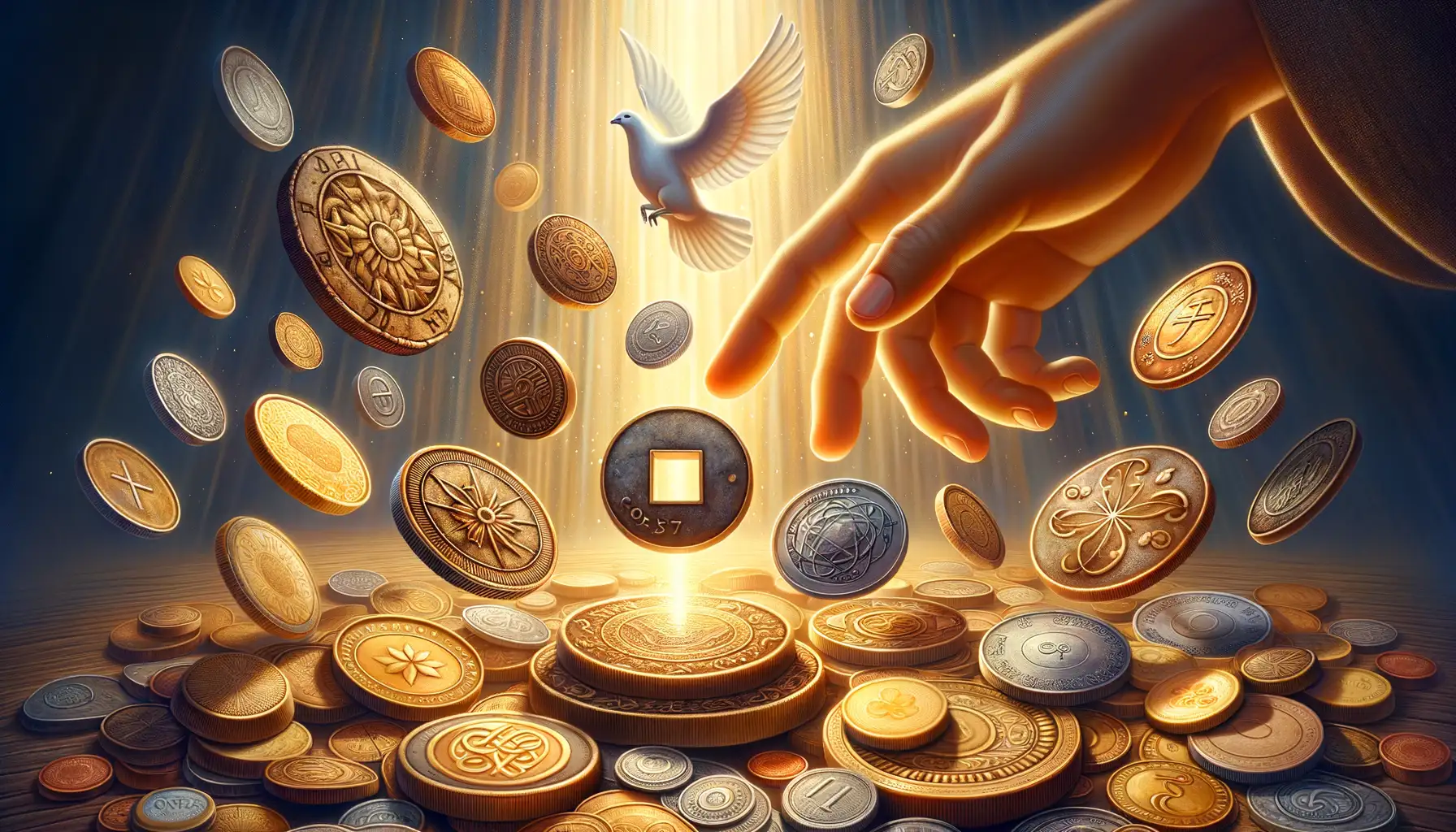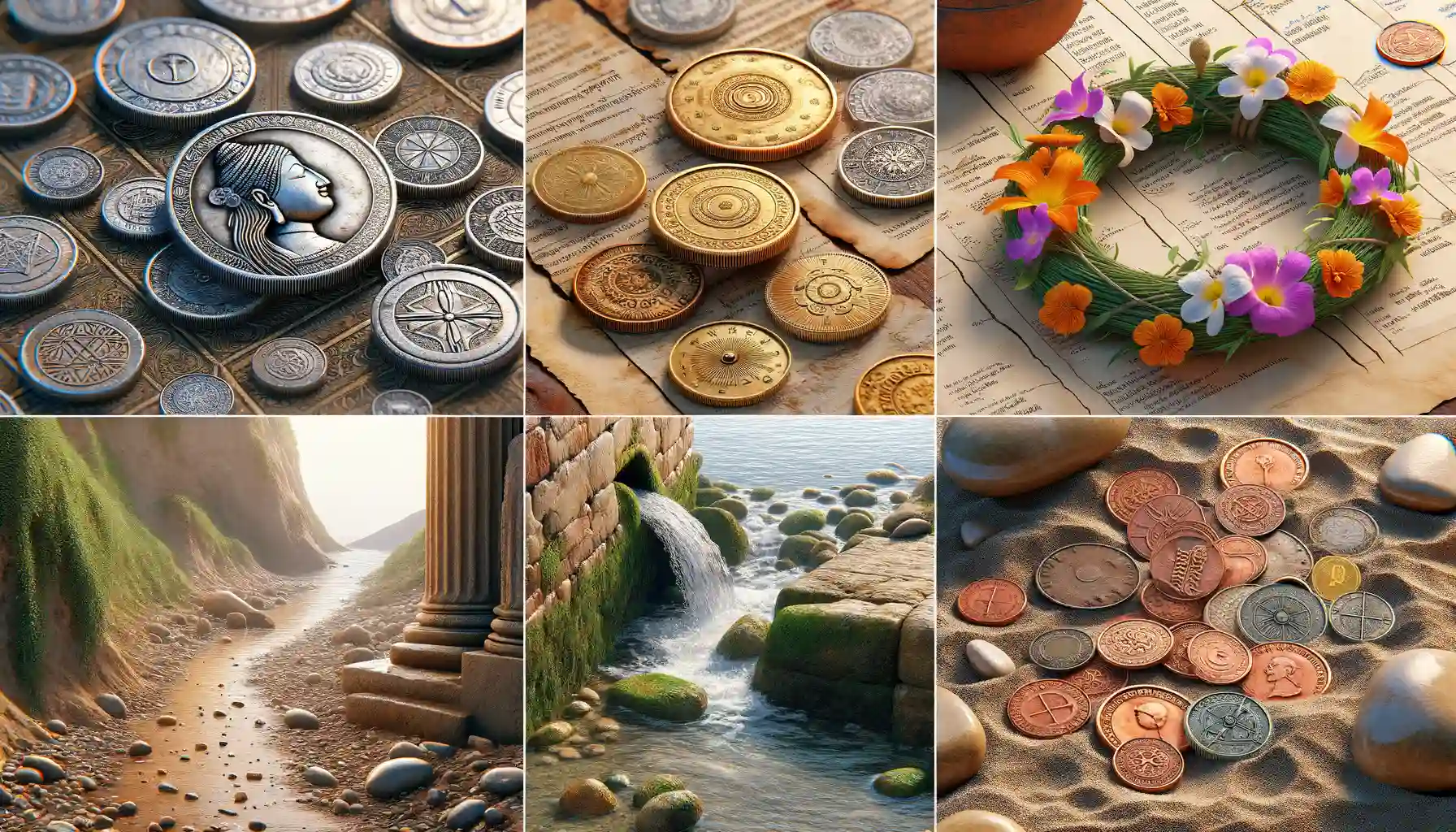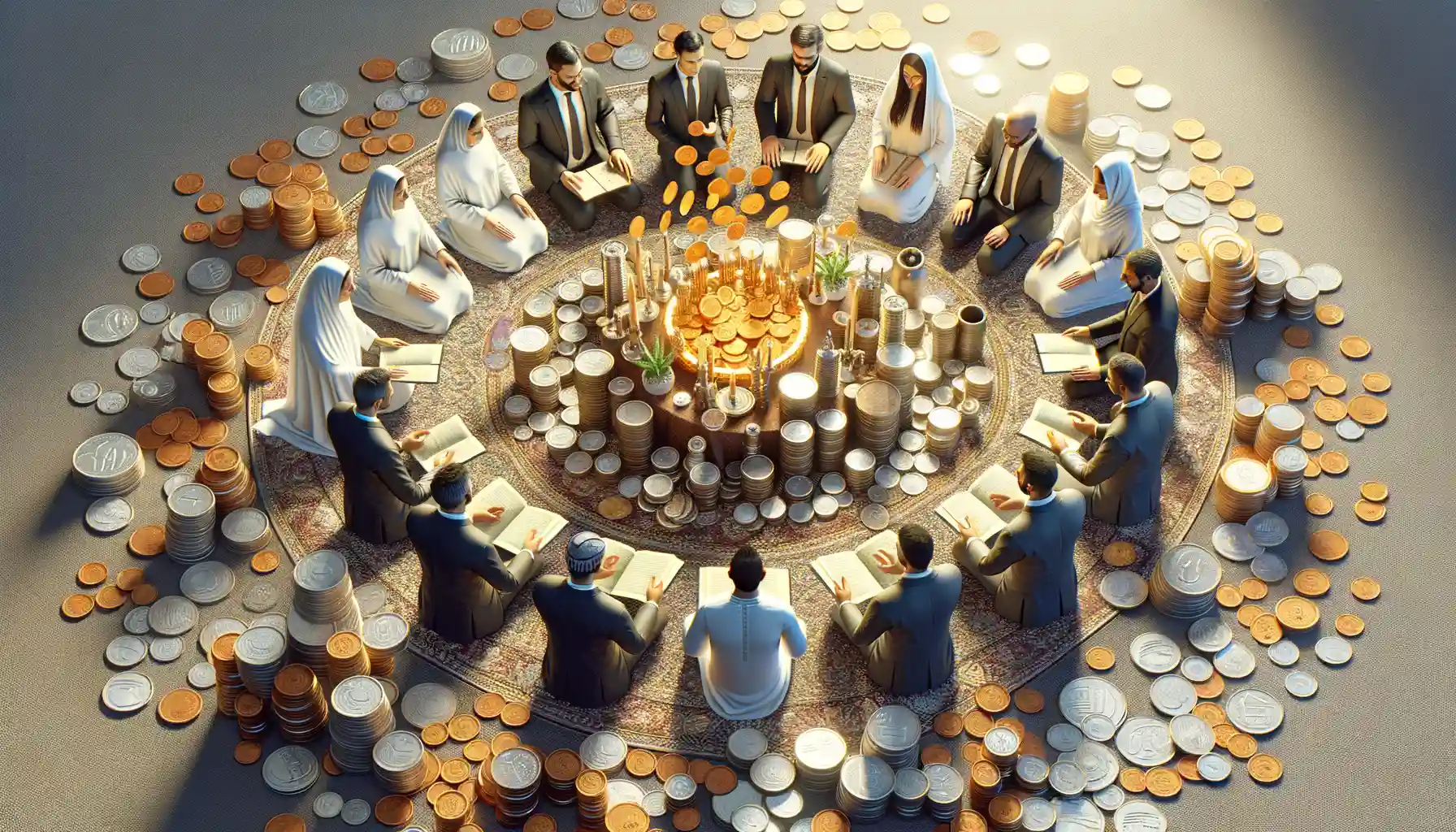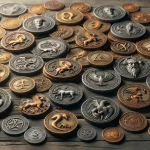Historical Significance of Coins in Religious Practices
Coins as Narrators of Sacred Stories
Imagine holding a coin that has journeyed through centuries, passed from hand to hand, imbued with whispers of devotion and hope. Coins have long been more than just currency; they are silent witnesses to history, especially in the realm of religion. Take, for instance, the temple offerings of ancient Greece where worshippers would toss coins into sacred fountains, asking for blessings from gods like Athena or Apollo. Those coins weren’t just money—they were prayers cast in metal.
Across the Roman Empire, coins often bore the images of deities, such as *Jupiter* or *Venus*, marking them not just as economic tools but as portable pieces of faith. The faithful carried these tiny discs not only for trade but as symbols of divine protection. It’s awe-inspiring to think: each scratch and tarnish tells a story of belief.
- In Judea, the “widow’s mite” became an enduring symbol of spiritual generosity, as recounted in the Bible.
- Ancient Indian temples often minted unique coins featuring depictions of gods like *Lakshmi* or *Vishnu*.
The Journey from Ritual to Legacy
Coins also played a transformative role in rituals. In China, *spirit money* or “ghost coins” were burned as offerings to ancestors—a hauntingly beautiful gesture to ensure prosperity in the afterlife. Meanwhile, Viking-era Scandinavians buried hoards of coins in graves, believing the wealth would accompany their warriors to Valhalla.
It’s fascinating to think how a single coin could shift between realms—offered in life, cherished in death, or preserved through time. These coins weren’t just objects; they were bridges between the mortal world and the divine, tangible connections to the unseen forces guiding believers’ lives.
Symbolism and Spiritual Meaning of Coins

Coins as Mirrors of Meaning
Coins are more than just metal discs; they’re tiny treasure troves of symbolism. Think about it—every coin carries a story, a purpose, even an energy. In many cultures, coins represent the circle of life, their round shape symbolizing continuity, eternity, and the unbroken path of existence. The metals used in coins, such as gold or silver, often echo sacred intentions: shining gold for divine light, grounding silver for lunar wisdom.
Have you ever held a coin and felt its weight? That tangible heft might remind us of responsibility—coins have embodied themes like fairness and justice for centuries, thanks to their role in balancing trade and value. And let’s not forget the engraved symbols on their surfaces! A phoenix can signal rebirth, while a laurel wreath might evoke victory or spiritual triumph.
So the next time you hold one, think deeper. Coins whisper secrets if you’re willing to listen.
The Spiritual Energy Coins Carry
There’s something magical about offering a coin in a ritual—it creates a bridge between the material and spiritual. Why? Because coins represent tangible effort and intention, something humans have cherished for millennia. When dropped into a wishing well, they transform from ordinary currency into carriers of hope and desire.
Many believe that coins absorb energy from their surroundings. Imagine an ancient temple where thousands have placed offering coins over centuries. Each piece is soaked in prayers, dreams, and gratitude—a literal repository of human emotion. Similarly, some people keep “lucky coins” as talismans, believing these small relics ward off misfortune and bring blessings.
The spiritual meanings of coins are diverse yet universal. They teach us about cycles, balance, and the duality of giving and receiving. Maybe the coin in your pocket has a quiet story waiting to unfold.
Coins as Offerings Across Different Cultures and Religions

A Shared Gesture Across Beliefs
Toss a coin, make a wish. This simple act isn’t just a modern superstition—it’s an echo of ancient traditions found across the globe. Across cultures and religions, coins have symbolized more than their material value—they’ve whispered prayers, carried hopes, and marked sacred connections.
In Hinduism, worshippers offer coins to river gods, especially in sacred waters like the Ganges. The coins are not mere currency; they’re tokens of gratitude, promises, and trust, silently carried away by the currents. Meanwhile, in Christianity, coins often find their way into offering plates or donation boxes during church services, symbolizing sacrifice and stewardship.
And take a moment to picture Japanese shrines: Visitors drop a few yen into a wooden offering box before clapping their hands twice and bowing—coins serving as small messengers bridging mortals with Shinto gods.
The Universal Language of Coins
Coins hold transcendent power because they’re tangible, universal. You see this in the ancient Greek practice of placing coins on the eyes of the deceased or inside Egyptian tombs:
- In ancient Greece, coins were given to Charon, the ferryman of the underworld, securing passage for the soul.
- In Chinese ancestral worship, coins burned as offerings are believed to provide wealth and protection in the afterlife.
Each culture uses these small metallic objects to say something big: I honor, I love, I hope. Even centuries apart, the language of coins remains timeless.
Modern Use of Coins in Religious Ceremonies

Coins as Sacred Connectors in Contemporary Worship
In our bustling modern world, the humble coin still finds a profound place within spiritual ceremonies. It’s not just about their material value—it’s their symbolism that strikes a chord. Coins serve as tangible bridges between the physical and the divine, carrying prayers, gratitude, or hopes for abundance.
Take the tradition of tossing coins into fountains, for instance. What might seem like a whimsical gesture to some is an act steeped in personal intention for others. You’re not just throwing metal; you’re whispering your desires to the universe. Similarly, in Hindu pujas, offering coins alongside fruits and incense embodies a token of devotion, a small yet heartfelt acknowledgment of life’s blessings.
- At Buddhist shrines, neatly stacked coins are left by visitors for prosperity, expressing silent wishes for balance and peace.
- In Christian rituals, such as offertory collections, coins symbolize a giving heart while helping sustain places of worship.
Even weddings and baptisms have incorporated coins in unique ways! In Filipino cultures, ceremonial coins, known as arras, are exchanged to symbolize the couple’s shared future wealth and responsibility. Isn’t it magical how these little discs of metal carry so much weight—literally and spiritually?
Preservation and Collection of Ritual Coins

The Fragile Yet Timeless Beauty of Ritual Coins
Preserving ritual coins is like holding onto whispers from centuries past. These coins are more than metal—they are the carriers of prayers, devotion, and sacred energy. But here’s the thing: their beauty is often fragile. The patina that forms over time? That’s not just rust or tarnish; it’s history wearing its age like a crown.
Collectors will tell you there’s a certain magic in bringing these relics into your life. Imagine holding a coin once offered to a temple deity in ancient Greece or tucked into a prayer flag in Nepal. Their imperfections—the worn edges, faded engravings—only amplify their spiritual essence.
For safe preservation, consider these steps:
- Store them in acid-free containers to prevent decay.
- Keep them in dry, temperature-controlled spaces to avoid moisture damage.
- Handle them with gloves to protect their delicate surface.
Collecting as a Spiritual Journey
Collecting isn’t just a hobby; it’s a deeply personal journey. Each coin has its story, and in gathering them, you become a storyteller—a keeper of faith across time. Whether it’s a gilded Buddhist coin or a humble Christian votive penny, these artifacts invite connection to something greater than ourselves.




